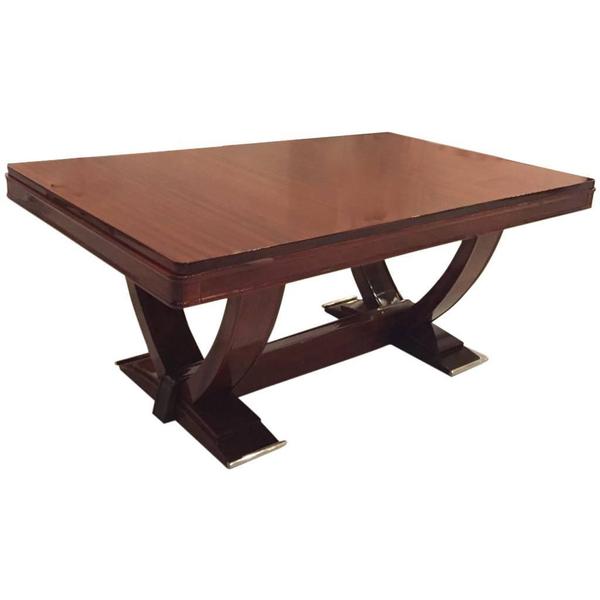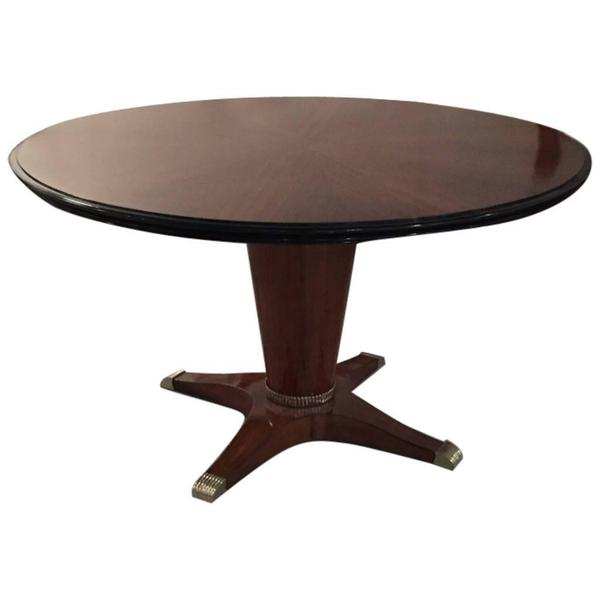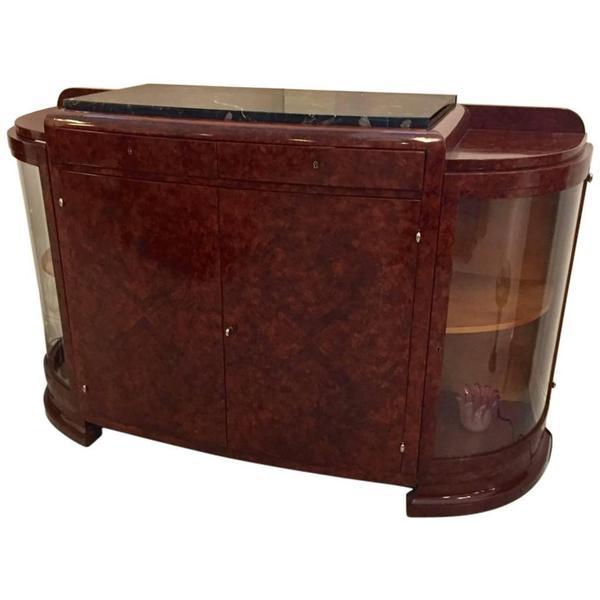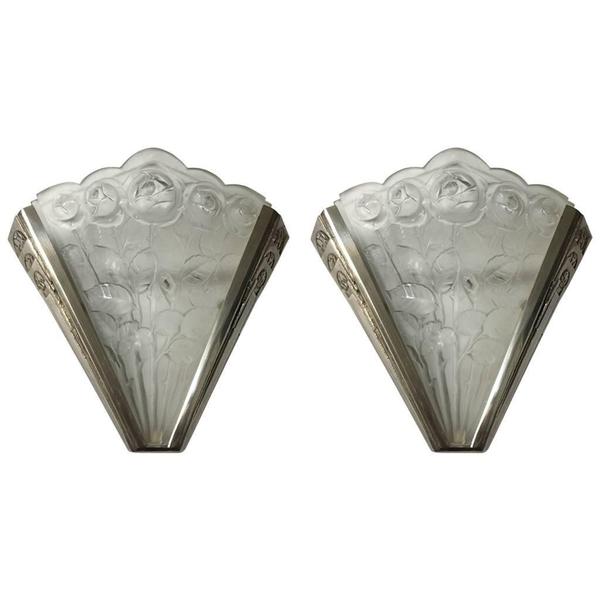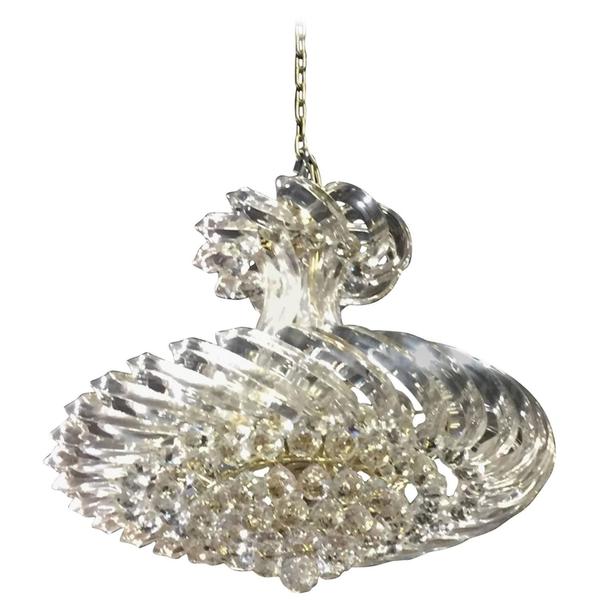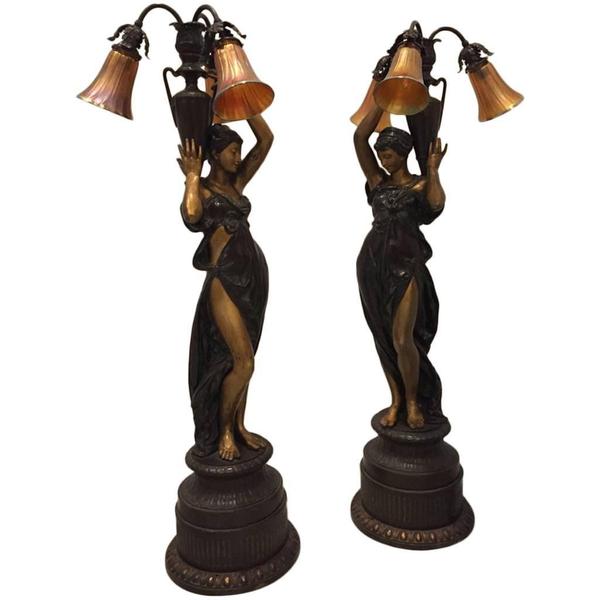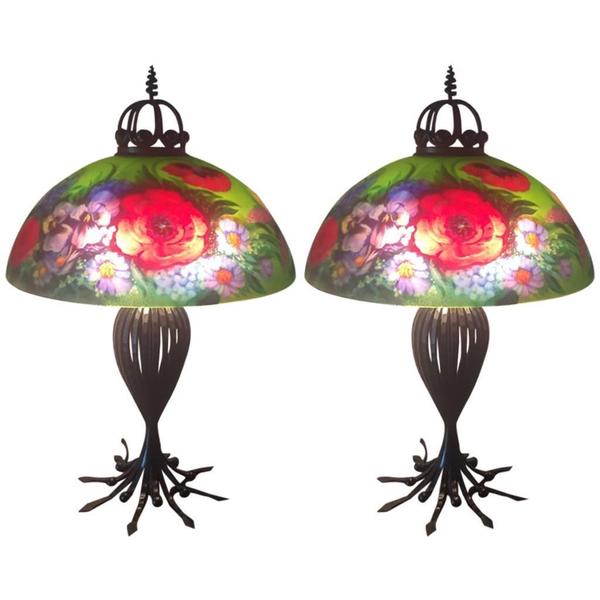Blog
4 Tips for an Inviting Dining Room 0
Dining rooms are the perfect place to get together as a family and with friends. Food and a comfortable seat lend themselves to catching up, great conversations and solving life's greatest problems.

To encourage the kind of conversations that make friendships and family life great, you'll want a comfortably placed and designed dining room, with enough lighting, space and atmosphere.
1 - Measure, measure, measure
Unlike a living room or bedroom, which can easily be shuffled around, the furniture in your dining room is likely to remain where you put it until you replace it or move house. Before committing yourself to a dining room set, make sure you have measured the room.
French Art Deco Dining Table by Gaston Poisson
Next, while shopping, measure the table and the chairs - how much space they take up together. Lastly, take account of room to move. A good rule of thumb is to allow for between 36 and 48 inches between the edge of the table and the closest wall or other piece of furniture.
2 - Square pegs and round holes
Dining tables come in two basic shapes - square and round. Sure, square could be rectangle and round could be oval, but the basic stands. Choosing between these two depends on the size of your room and how many people you need to seat.
French Art Deco Round "Sunburst" Dining Table with Silver Hardware
Round tables seat less people than similarly sized square ones, so the bigger your family or the more people you regularly entertain, the more you should tend towards a square table.
Be realistic when buying the table. If you dream of throwing lavish dinner parties for ten or more, but the reality is you won't have more than six at a time, don't overcrowd your dining room with a too-large table.
At the same time, if your dining room is enormous and can easily accommodate a twelve- or fourteen-seater, don't let a tiny four-seater round table get lost in all the space... rather make a few more friends!
3 - The right piece in the right place
Unless you have a really tiny dining room with barely enough space for a two-seater round table, you'll probably consider a sideboard or a buffet to hold your dinner services and silverware. They are also very useful for serving the food.
French Art Deco Buffet with Portoro Marble Top
Like I mentioned in point 1, you want enough space between the table and any other piece of furniture, so make sure you measure and account for the buffet.
Ideally, the buffet should be placed as close as possible to where the food will be carried in, so against the wall near the door that leads to the kitchen. This just makes for less heavy lifting, and less chance of spills.
4 - A light dinner
I've covered dining room lighting pretty comprehensively before, so take a look at the tips in this article to make the best out of lighting up your dining space.
For the TL;DR version - you need plenty of light, but not so much that it blinds anyone, don't place lamps that people can trip over, invest in sconces and a dimmer switch for those more atmospheric evenings, and don't make anyone bang their head on the chandelier.
Next time, we'll take a look at how to organize your bedroom. For now, enjoy your dinner!
- Matthew Pillet
5 Tips for Arranging Your Living Room Furniture 0
Decor is about more than just buying a few items in a particular style and sticking them in a room. It's about creating a room that shows off your design acumen and taste, while being comfortable enough to actually live in.
Knowing how to arrange your furniture, lighting and accessories is the best way to make sure your room is beautiful and livable at the same time. We've covered lighting pretty extensively, so now we're focusing on furniture arrangement. We will cover accessorizing in our next series.

The living room is often one of the first rooms that the aspiring Art Deco or Mid-century Modern aficionado chooses to transform, which is why we're starting with this room.
1 - Measure twice
It's an old builders' and carpenters' saying: measure twice, cut once. In a nutshell, making 100% sure of your measurements means you won't have problems with sizing later. So before you go out and buy your furniture, measure the room well.
Also, get the measurements of any pieces of furniture you want to buy beforehand, so you can make sure they will fit.
Top tip: Don't forget, it's not just about making sure everything fits, it's also about making sure there's room to move easily.
2 - Draw it out
Once you have your room's measurements, take a piece of paper or your tablet (or your CAD software if you're that way inclined) and draw out a scale model of the room. Using the measurements of the furniture you got, plan their placement and try a few variations on positions.
Top tip: Get measurements on at least two different furniture sets. This way, if one just doesn't work, you don't have to start all over.
3 - Explore your options
When choosing the furniture for your living room, don't just look at one option. You may have fallen in love with that lovely, plush matching pair of Club chairs, but realistically have room for one sofa instead.
Of course, you might think the sofa is the perfect piece and discover it will disappear in your larger-than-you-thought living room, meaning you need to fill up loads of empty space.
Top tip: Not everything has to match. If you have extra space to fill, find something that complements your existing furniture, but adds a different dimension to the decor.
4 - Make room
I touched on this in point 1, but it bears expanding on. No matter how beautiful and comfortable your furniture is, you don't want to have to climb over it or do the sideways shuffle to get past it every time you need the bathroom.
When you're planning the space, take a full room of people into consideration. If each seat or sofa has someone sitting on it, will the room still feel comfortable, or will it feel cramped?
Top tip: While you have the measuring tape out, measure yourself - how long is your stride? How wide a space do you need to move?
5 - Serving a purpose
Whether you live in a spacious mansion or a two-bedroom walk-up, pointless furniture just clutters the room. Make sure everything in the room has a purpose. Will that set of nested tables get used regularly for guests to put their drinks on? Is that ottoman really going to be used as a footrest or seat?
This goes both ways, too. Do you have a coffee table where it's needed, or is your cup relegated to the floor because you chose that extra bench instead of the table?
Top tip: Imagine the room's everyday use as well as when you have several guests. This will help you decide what furniture is essential, what's occasional and what's better left back at the store.
- Matthew Pillet
4 Delicious Lighting Tips For Your Dining Room 0
Each room in the house has its own function and personality - what works in the bedroom, for example, doesn't necessarily work in the dining room, and vice versa.
Bedrooms are all about mood lighting and you can get away with a lot less brightness and a lot more diffusion, than in the kitchen, which needs a lot of light, or the dining room, where a good balance is key.

Dining rooms can be tricky to light properly. It's a very social area, designed specifically to encourage interaction with family and friends. You need plenty of light to see what's happening and to see what you're eating and drinking, but harsh or over-bright lighting can make it unpleasant to stick around for long.
Dining rooms are all about finding the right balance and these tips will help you find it.
1 - Room to move
Dining rooms are quite dynamic; even though the idea is to sit in your chair and enjoy the meal, there will always be a lot of movement around the table - people pushing out chairs, getting up to switch places or move large dishes to sideboards... the furniture never stays in one place, unlike your living room.
That's why this is not the ideal room to include standing lamps - they could too easily get knocked over and broken. Likewise, because there is a lot of movement on the table itself, table lamps are not ideal.
That, of course, leaves us with limited options to ensure good lighting in the dining room. You basically have overhead lighting, sconces and natural lighting to make sure everyone can tell the difference between the potatoes and cauliflower, and avoid knocking over too many cocktail glasses.
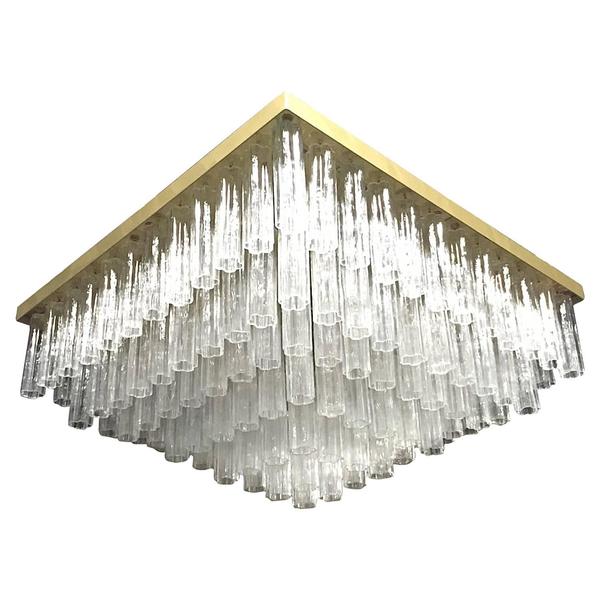
This magnificent Grand Five-Tier Tronchi Chandelier will dazzle dinner guests.
2 - Heads up
Because it's such a social area, you can really go all out with the style of your ceiling lights and chandeliers. Don't be afraid to show off or get extravagant - if that's your style - but remember one thing: don't knock yourself out.
All that movement we mentioned in point 1? Remember that means vertical movement, too.
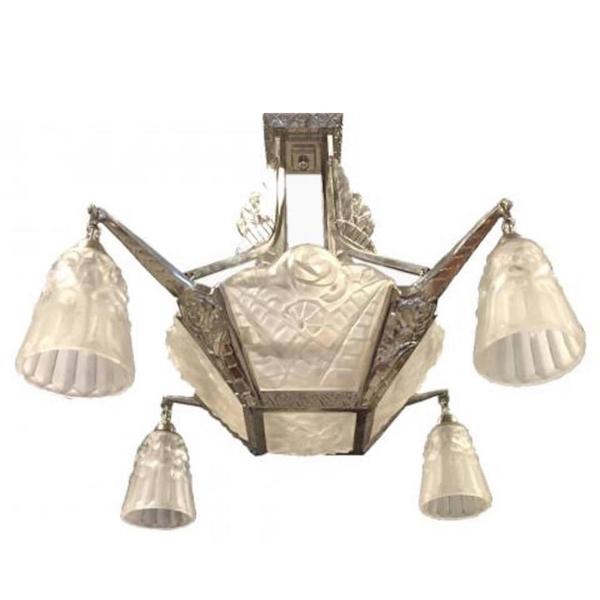
This French Art Deco chandelier will give plenty of light without getting in the way.
You don't want Grandpa concussing himself on the low-hanging chandelier at Thanksgiving dinner, or to get Mabel's lavish hair fascinator stuck in the baubles when she toasts your health at your Great Gatsby-themed birthday party.
Watch the height and make sure there is always plenty of room to move, even while making sure the chandelier is going to provide enough light.
3 - Go to your corner
Sconces are a fantastic way to add extra light to any room, and the dining room is no different. The trick with sconces, however, is always about positioning them right.
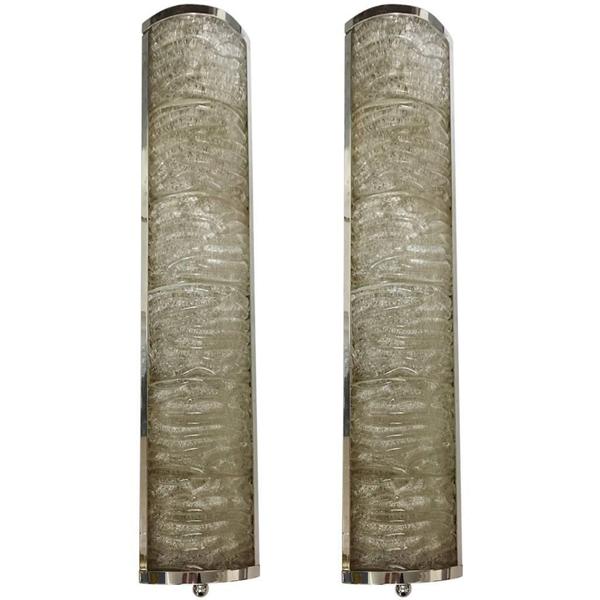
Brighten up those dark corners with this pair of Italian Mid-century Corner Sconces.
You don't want the light from sconces to shine too directly in anyone's eyes, but you want them to provide enough illumination to move around easily and see everyone's faces clearly.
Try using sconces that work in corners, so that they not only clearly delineate the room, but ensure there are no dark corners, all while being conveniently not directly behind someone - and in someone else's eyes.
4 - Dip it low
Good, bright lighting will do perfectly for ninety percent of your dining table needs, but for those lengthy dinner parties that just go on and on into the night, you may want the option of adjusting the lights, both to create ambiance and to soften the impact on semi-intoxicated guests' sensitive eyes.
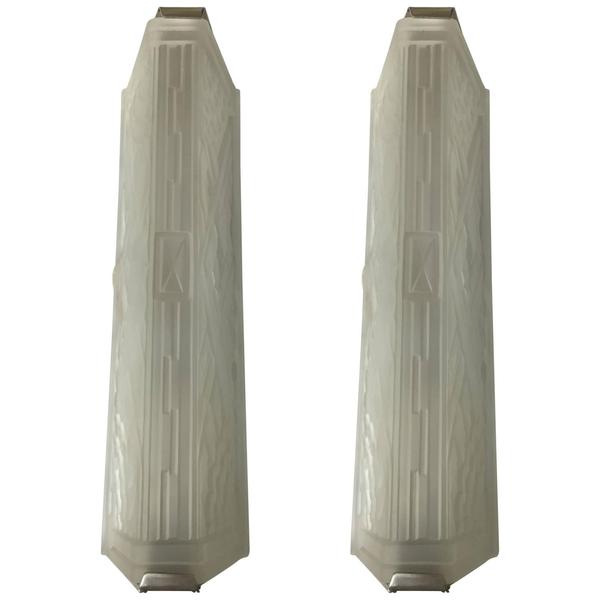
Nothing says "ambiance" like these French Art Deco corner sconces.
In other words, get a dimmer switch installed in your dining room. Also make sure your chandelier and sconces are controlled separately, so you can turn one off while leaving the other on.
Like with any other room, plan your lighting carefully. Measure not only the length and width of the room, but also the height, before you go shopping, and take the overall style of the home and the room into account.
- Matthew Pillet
5 Cozy Bedroom Lighting Tips 1
I don't know about you, but for me the bedroom is about more than just getting a good night's sleep - and before you grin like that, my personal second-favorite thing is to curl up in bed with a great book.
Of course, that means I need enough light to read by, and that meant planning my bedroom lighting pretty carefully. I wanted mood lighting, rather than bright lighting, but needed a good source of additional light for reading.
Lighting your bedroom depends a lot on what your bedroom means to you. Is it a sanctuary away from the hustle and bustle, do you like to watch TV in bed, or do you spend half your life there? Here are five things to consider when lighting up your bedroom.
1 - Light gets in your eyes
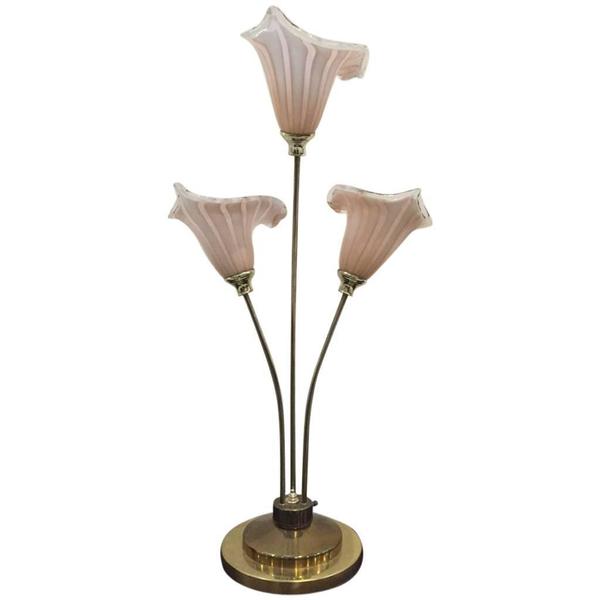
These Italian Murano Hand-blown Calla Lilies provide beautiful indirect lighting
I've seen so many houses where a sconce or ceiling light is positioned right in the line of sight from the bed. All that's going to do is hurt your eyes and give you a headache. Positioning is very important for bedroom lighting, because relaxing is key.
Sconces, ceiling lights and chandeliers should be placed where they will give good lighting without getting in your eyes, but where they will give enough light for purpose.
2 - Brighter shades of pale
To create good mood lighting without being too dark, the right kind of shade is needed. You don't want the lights to be too bright or too dim, so using a shade that diffuses the light well will help strike that balance.

On that point, choose lightbulbs in warm white rather than cool white, to help create a warmer, more relaxing atmosphere.
3 - More is more
Don't feel you need to limit yourself with bedroom lighting. There's no reason to have just an overhead light and a couple of beside lamps. By playing with different levels of lighting you can create multiple levels of mood.
Depending on the size of your room, you can include everything from chandeliers to table lamps, sconces to standing lamps to help illuminate specific areas and tasks, and create levels of mood.
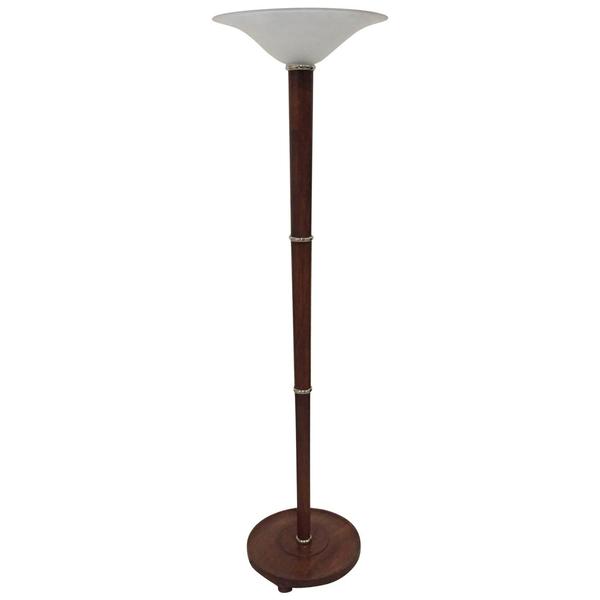
4 - Accentuate the positive
Now I know that, by definition, the bed really is the focal point of a bedroom and since I just said up in point one that you don't want to shine a light directly at it, the idea of accenting may seem counter-intuitive.
There are, however, many different ways to accent something without lighting it directly. Try a little backlighting behind the headboard, or even incorporating lights right into it.
5 - Why so serious?
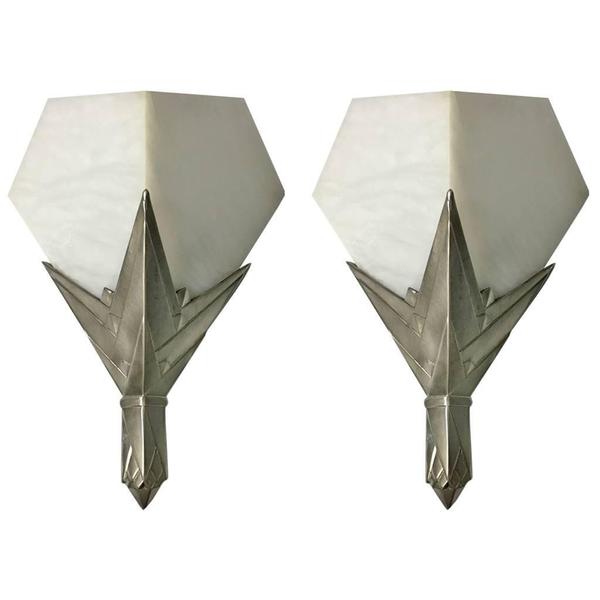
This pair of French Art Deco alabaster sconces could easily double as bedside lights
Have fun and get creative with lighting options. Are your bedside tables too small for a table lamp? Why not place a couple of sconces to serve as reading lights instead? Dressing area a little dark? Glam it up with an over-the-top chandelier.
Whether your bedroom is a high-traffic zone or a secluded area for one (or two), it's still a reflection on your personality and style. It deserves as much lighting attention as the rest of your home, so take time planning it and you'll have a bedroom to enjoy.
- Matthew Pillet
- Tags: bedroom
4 Bright Kitchen Lighting Tips 0
When you think of kitchen lighting, I’m willing to bet the first thing that comes to mind is a couple of fluorescent bars hiding behind a rectangular shade, making everything as bright as possible.
Sure, there’s nothing wrong with that kind of lighting, exactly, but the kitchen is the heart of the home, so why shouldn't it be warm and inviting? Lighting can have a lot to do with how a room feels, and the kitchen is no different.

Creating kitchens that are a pleasure to hang out in brings the joy of shared meals and food preparation back into the home. With these four tips, we’ll show you how to use lighting to turn your sterile kitchen into a safe haven.
1 - On another level
The old classic fluorescents gave great lighting from above for work surfaces. Unfortunately, they also created a lot of shadows, thanks to all the light coming from one direction.
Use lighting on different levels to make sure all corners of the kitchen are well illuminated. Each individual light won’t need to be as bright - and therefore as harsh - helping you manage the tone of the kitchen’s lighting more effectively.
Top Tip: Try adding sconces to the kitchen in strategic spots where they can help illuminate shadowy areas while accenting your design style.
2 - Design matters
Every other room in your house has a consistent decor style, so why shouldn't your kitchen?
If you've just dropped a few thousand dollars on remodeling the kitchen, picking cupboards, counter-tops and appliances to suit a style, then go the last mile and match the lighting too. Imagine a gorgeous Art Deco style kitchen with fluorescents overhead! Ok, no, rather don’t, it’s not a pretty sight.
Create design consistency by choosing lighting to suit your kitchen styles. It’s a great way to tie the rest of the home’s decor together, too, especially if you are redecorating the entire home in a style like Art Deco or Mid-century Modern.
Top Tip: Instead of modern pendants over the cooking or eating area, try a beautiful Art Deco ceiling light. It will illuminate just as well, and add a touch of style.
3 - Use what you have
Wherever possible, take advantage of natural light in your kitchen. It’s not just a great way to illuminate a room, it’s also a fantastic design focal point. If you have a good window in your kitchen, find some period-authentic drapes or half-curtains to frame it.
4 - Give in to glamor
But a chandelier in my kitchen? Surely that’s a bit… much?
Not at all. There is no good reason not to hang a chandelier in your kitchen, unless it’s going to get in the way of people moving around. Have fun with your lighting and create a total immersion experience with your decor.
Chandeliers can be anywhere from ostentatious to plain and simple and there is bound to be one that suits your kitchen style. Lighting is one element that can pull disparate elements together and firmly state, this is a Mid-century Modern kitchen, not just an old-fashioned one.
Top Tip: Choose a chandelier that can be cleaned easily, as they will pick up airborne oil and water residue quite easily - it’s just the nature of kitchens.
Kitchens are more than just functional - they have always been the places where life happens and sadly, the modern world treats them too often like spaces where instant meals come from.
Take the time to make your kitchen a place of beauty and style and you’ll want to spend more time in it, preparing delicious, freshly made meals with your family and friends.
- Matthew Pillet
4 Dazzling Lighting Tips for Your Living Room 0
One of the greatest inventions of the modern age is still electric lighting - it just takes one black-out to remind us of how great it really is.
But lighting is about more than just being able to see what you're doing. It's about creating a great atmosphere, enhancing comfort and even about making your home look amazing. Here are four ways you can use lighting to make your living room dazzle.
1 - Think in layers
Having one great chandelier may make a statement, but what happens when you want to reduce the light levels for a more intimate feel?
Your living room should have at least three levels of lighting: bright, intermediate and low. You can achieve this by having at least three different sources of lighting, such as a chandelier or ceiling fitting, floor or table lamps, and sconces.
You can experiment with different combinations to give you more variety of layering as well.
2 - Measure up
When you're planning new furniture, you take the time to measure the room and make sure everything will fit properly - so why not do the same with lighting? The wrong sized lamps or chandeliers will look out of proportion, or could either get in the way or disappear.
Measure the floor/ceiling space, room height and distance from the windows and doors to make sure your lighting will fit where you need it.
3 - Accentuate the positive
Do you have a particularly nice piece of Mid-century Modern art, or a classic 1930s movie poster that you'd like to show off?
A good accent light can help you highlight it - just don't make it a blinding light. Consider the overall tone of the room and just add enough to make it stand out without being a big distraction.
4 - Watch your tone
When choosing the light bulbs for your fitting and lamps, pay attention to the tone of the globe.
If your shade is colored or painted, using a cooler white light can help make the colors pop, but in a clear or monochrome shade it can make your room feel over-bright or washed out.
For clear glass or Lucite, or light-colored shades, choosing a warmer tone will help create a more comfortable, inviting atmosphere.
Taking the time to consider your lighting will make a big difference to the atmosphere of your room. Don't be afraid to experiment with tones and placements before you choose your ceiling lights, lamps and sconces. And don't be afraid to ask us!
- Matthew Pillet
